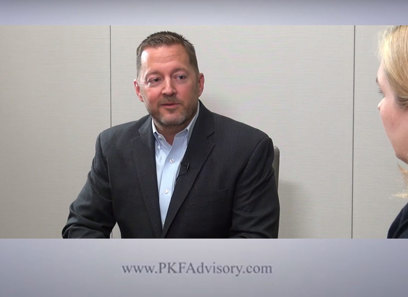Future-Proof Your Service: Secret Cybersecurity Forecasts You Required to Know
As services face the increasing speed of digital change, understanding the developing landscape of cybersecurity is essential for long-term resilience. Forecasts recommend a significant uptick in AI-driven cyber risks, alongside heightened regulative scrutiny and the important change towards No Trust fund Architecture.
Surge of AI-Driven Cyber Hazards

One of the most concerning developments is making use of AI in creating deepfakes and phishing systems that are extremely convincing. Cybercriminals can make sound and video clip material, impersonating executives or trusted individuals, to manipulate targets right into divulging delicate info or authorizing deceptive purchases. Additionally, AI-driven malware can adapt in real-time to evade discovery by traditional protection measures.
Organizations have to acknowledge the urgent demand to bolster their cybersecurity structures to fight these advancing dangers. This includes investing in innovative danger discovery systems, fostering a society of cybersecurity understanding, and implementing robust incident response plans. As the landscape of cyber hazards changes, aggressive measures come to be crucial for securing sensitive information and keeping company integrity in a significantly electronic world.
Boosted Concentrate On Data Personal Privacy
Just how can companies properly browse the expanding focus on information privacy in today's digital landscape? As regulatory structures advance and customer expectations rise, companies need to prioritize robust data personal privacy approaches. This involves taking on comprehensive data governance policies that make certain the honest handling of individual information. Organizations should carry out routine audits to examine conformity with guidelines such as GDPR and CCPA, recognizing potential vulnerabilities that can cause data violations.
Spending in worker training is essential, as team recognition directly influences information defense. In addition, leveraging modern technology to enhance information safety and security is vital.
Cooperation with legal and IT teams is essential to straighten data personal privacy initiatives with business objectives. Organizations needs to likewise involve with stakeholders, consisting of customers, to connect their commitment to information personal privacy transparently. By proactively addressing information privacy concerns, services can develop trust and enhance their online reputation, eventually contributing to lasting success in a significantly scrutinized digital atmosphere.
The Shift to Zero Count On Architecture
In action to the progressing danger landscape, organizations are progressively adopting No Trust fund Architecture (ZTA) as a fundamental cybersecurity technique. This approach is predicated on the principle of "never ever trust, always verify," which mandates continual confirmation of individual identifications, gadgets, and information, regardless of their area within or outside the network boundary.
Transitioning to ZTA involves carrying out identity and gain access to monitoring (IAM) solutions, micro-segmentation, and least-privilege access controls. By granularly regulating access to resources, organizations can reduce the danger of insider dangers and decrease the influence of outside breaches. In addition, ZTA incorporates durable surveillance and analytics capabilities, permitting organizations to find and reply to abnormalities in real-time.

The shift to ZTA is likewise fueled by the boosting fostering of cloud services and remote work, which have actually broadened the strike surface (cyber resilience). Typical perimeter-based protection models are insufficient in this new landscape, making ZTA a much more durable and adaptive structure
As cyber risks remain to grow in class, the fostering of Absolutely no Count on principles will be crucial for companies seeking to safeguard their possessions and keep regulative conformity while making sure company continuity in an unsure environment.
Governing Adjustments coming up

Approaching policies are expected to resolve a variety of concerns, consisting of information personal privacy, violation notice, check this and case reaction procedures. The General Information Security Law (GDPR) in Europe has set a precedent, and similar structures are emerging in other regions, such as the United States with the recommended federal personal privacy laws. These laws frequently impose strict charges for non-compliance, emphasizing the demand for companies to prioritize their cybersecurity steps.
Additionally, industries such as finance, medical care, and vital infrastructure are likely to face extra strict requirements, mirroring the sensitive nature of the information they take care of. Conformity will not simply be a lawful commitment but a vital component of structure trust fund with consumers and stakeholders. Organizations needs to remain ahead of these adjustments, incorporating regulative like it needs into their cybersecurity methods to guarantee durability and safeguard their assets properly.
Relevance of Cybersecurity Training
Why is cybersecurity training a crucial element of an organization's protection method? In an age where cyber threats are significantly sophisticated, organizations need to recognize that their employees are usually the very first line of defense. Reliable cybersecurity training equips team with the understanding to determine possible risks, such as phishing attacks, malware, and social design tactics.
By fostering a society of safety recognition, organizations can significantly reduce the danger of human error, which is a leading root cause of information breaches. Routine training sessions guarantee that workers stay educated concerning the most recent hazards and best methods, consequently enhancing their capability to respond suitably to cases.
Moreover, cybersecurity training promotes conformity with regulatory needs, reducing the threat of lawful consequences and punitive damages. It also empowers workers to take ownership of their duty in the company's safety structure, leading to an aggressive instead of reactive method to cybersecurity.
Verdict
In final thought, the advancing landscape of cybersecurity demands proactive procedures to resolve arising hazards. The increase of AI-driven attacks, combined with increased click site information privacy issues and the change to Zero Trust Design, demands a comprehensive strategy to protection.